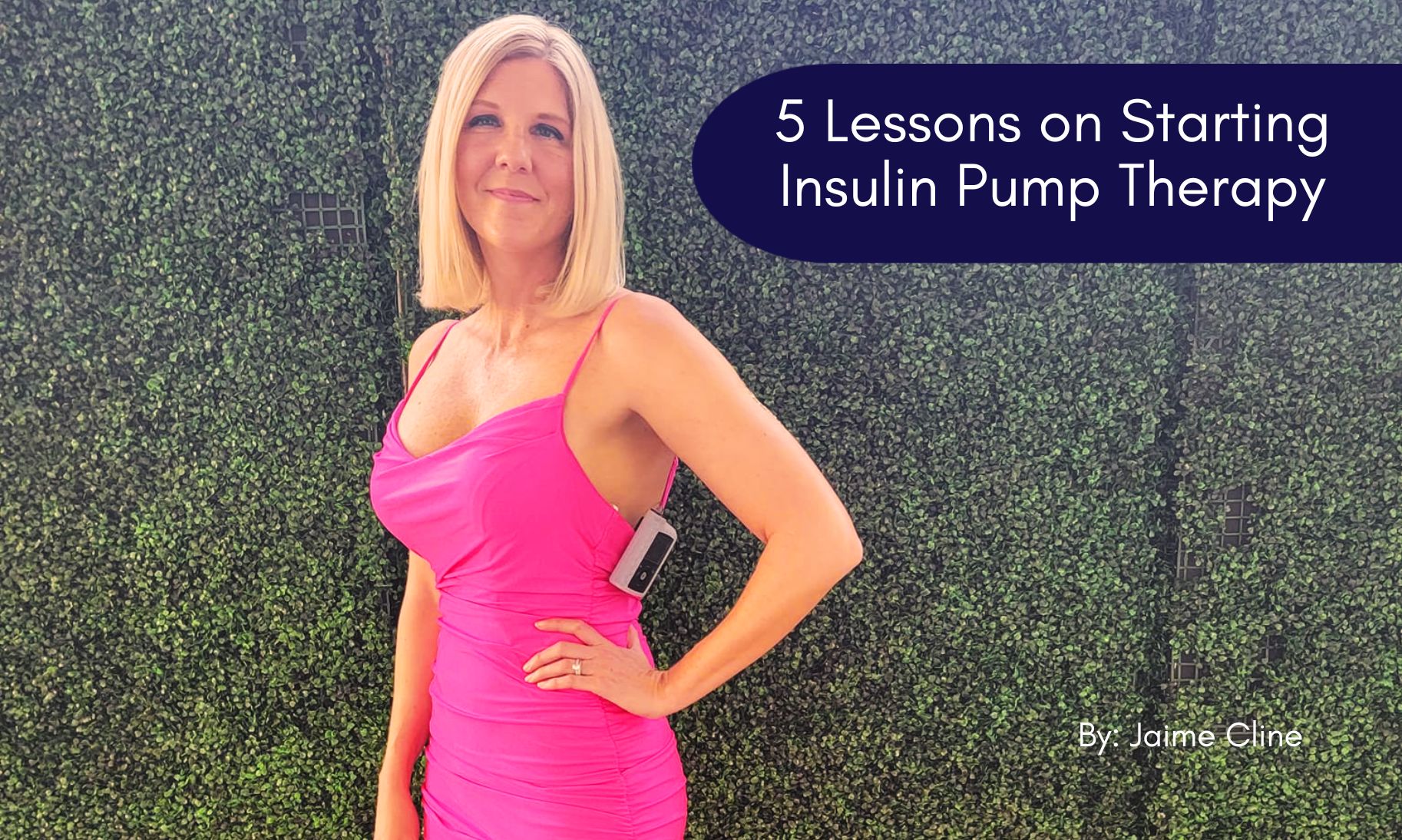5 Lessons on starting insulin pump therapy

Hi everyone! My name is Jaime – I’m a Medtronic employee and I learned quite a few things when I started insulin pump therapy. Allow me to share my top 5 lessons.
I wanted to take a different approach and look at lessons that maybe aren’t so pump focused and more focused on my journey with my pump.
1. There is a learning curve—so get comfortable with being a beginner again.
I was diagnosed with type 1 when I was three years old and didn’t start on an insulin pump until my early twenties. I had a lot of time, experiences, and knowledge under my belt with taking insulin injections so I figured that starting on an insulin pump would be a breeze for a “diabetes pro” like me.
How hard could it be? I was wrong. There was a lot to learn and a lot of things that I needed to tweak at first! When I started on my first pump, I had to:
- Do multiple fingerstick checks throughout the first few days in order to make sure my basal settings were correct
- Learn how to insert my new infusion set
- Make sure that I filled up my reservoir correctly with the amount of insulin I needed for the next three days
- Learn what “bolus” and “basal” meant
- Navigate the different options in my pump
For the first time in a long time, I was doing something “new” with my diabetes—which was equal parts exciting and scary! I learned to trust myself and…
2. When starting insulin pump therapy, I had to learn to trust my pump.

After 18+ years of doing this whole diabetes management thing solo, suddenly I had a teammate. I was used to being the one to make all of my insulin dosing decisions, doing the math calculations in my head, injecting the needle into my skin, and pushing the plunger down to dispense the insulin. I had control.
Now, I was in a partnership with this device on my waist. We were a team. I would rely on it to help do the complicated math equations. Rely on it to figure out how much insulin I needed to cover my meals or corrections. Trust that it would do what it needed to do to keep me healthy.
I vividly remember looking at my pump screen multiple times a day during the first few weeks. Was it on? Was it working? Did I put the right information in? Slowly I started to feel more comfortable with my pump until I got to the point where it just became second nature—and the MVP of the team.
3. Finding a community was so important.
I could not be more grateful to the pumping community who was there to answer the millions of questions I had about my insulin pump. They were there to help with innovative ways to wear my insulin pump when I wore a dress or how to travel internationally with my pump — truly a wealth of information. When I found people that were on a similar path that I was, I learned so much about my new pump, my diabetes, and myself. Soon I was the pro-pumper helping people with their new pumps too!
4. My pump was only as good at managing my diabetes as I was.
I still had to manage my diabetes, which meant I still had to:
- Count carbs and correct for lows
- Manage my diet
- Get enough exercise
- Make sure I was taking my supplements
- Get a good night’s sleep
My pump made managing my diabetes exponentially simpler for me and gave me a freedom I didn’t know existed—but I still had diabetes.
I couldn’t take my foot off the gas. I still had a chronic disease that could knock me for a loop. My pump wasn’t a cure—but it was an amazing piece of technology that made the day-to-day management easier.
5. I don’t care about having a pump attached to me.
Let me unpack this one. One of the biggest disadvantages for starting insulin pump therapy for me was that I didn’t want the visual reminder that I had diabetes clipped to my waist. At that point in my life, I wanted it to remain hidden. I couldn’t do that with a pump attached to me like a billboard announcing to the world “Jaime has diabetes.”
I was hyper aware of it the first few days I had it on. I thought everyone was staring at me and trying to figure out what that thing was on my waist. Was it a pager? In 2003?
After a few short weeks with my pump, I didn’t care anymore that I had it attached to me. I didn’t care if people saw it. I didn’t care that people knew I had diabetes. In fact, I was PROUD of it.
I wanted people to ask me about it so I could share with them the life changing impact it had on me. It didn’t matter that I had an insulin pump attached to me anymore – I loved it. I learned that I could use it as a way to educate and advocate for people just like me. I learned I could use it to find other people with diabetes out in the world. Ultimately, I learned that I only cared about what the insulin pump did for me.
What surprising thing did you learn about yourself after starting insulin pump therapy? I’d love to hear them—share them with me below!



